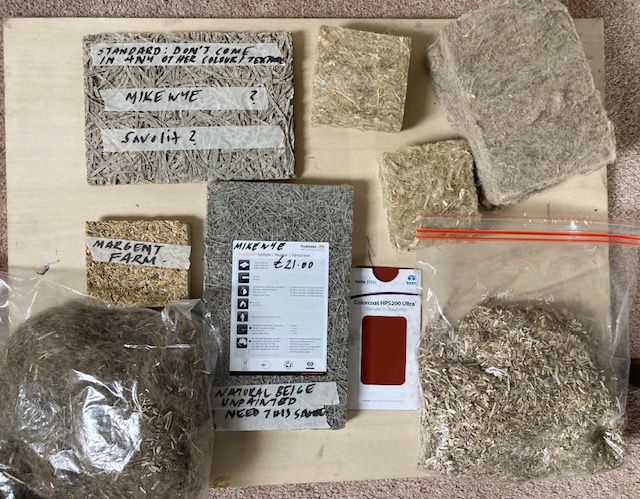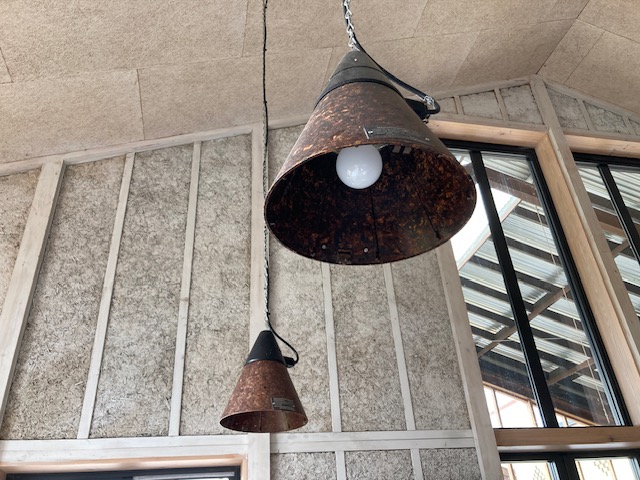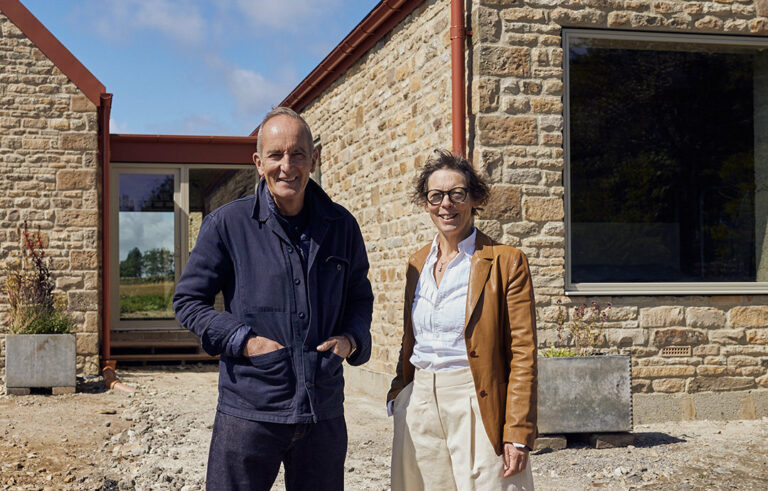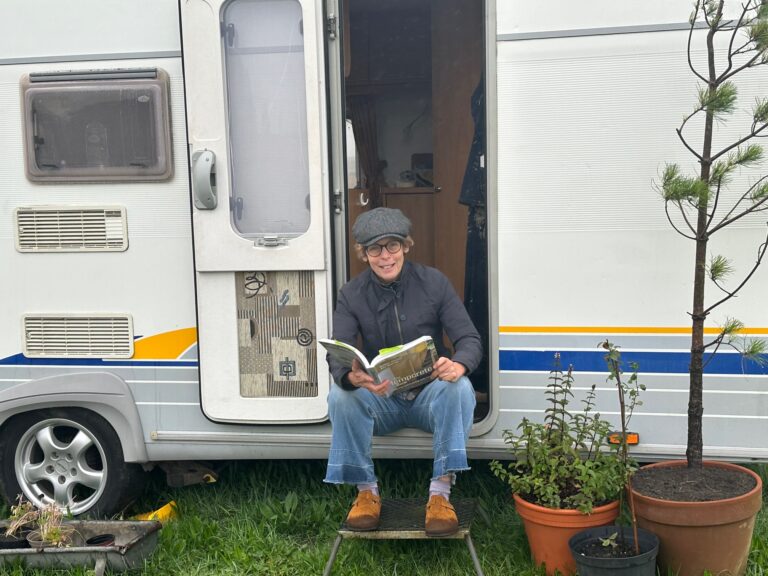Natural vs Unnatural building materials
How quickly things can change

Current building regulations, introduced in April this year state the following:
A roof must have a combined U value of or less (numerically) than U Value 0.11 W/mK
A wall must have a combined U value of or less (numerically) than U Value 0.18 W/mK
w/mk = watts per metre kelvin or how much heat is lost through conduction, convection and radiation. The lesser the U value the better the material works as an insulator.
How quickly things can change. I am, sadly, going to have to compromise on my use of materials for the roof insulation of my new build home/studio. Since deciding to use hempcrete for the wall build up, I was keen to use a natural material for insulating the roof as well. I ruled out casting the roof with hempcrete, as this would have meant erecting a temporary roof over the entire structure to ensure protection against bad weather during the casting also climbing up and down scaffolding in howling winds with buckets of hempcrete was unappealing. I need a roof which can be put up quickly, to provide shelter while we cast the hempcrete walls.
A natural material is healthy to live with, it has good thermal mass, it regulates temperature absorbing heat and releasing it slowly, it breathes, allowing the passage of moisture, it also has very good acoustic properties. Unfortunately, no natural material is as thermally efficient as PIR (polyisocyanurate). PIR is the generic term for the commonly used, rigid foam insulation sandwiched between two layers of foil, Kingspan and Celotex being two brand leaders.
I needed specialist advice and comment on the working drawings in specific relation to the hempcrete, I approached several companies and individuals who all have working experience with hempcrete and eventually chose to commission the knowledgeable and very approachable Brighton based ‘Kind Supply’ for a report.
The architects and I needed confirmation that our proposed depth of 400mm was sufficient to meet or exceed a U value of .17, we wanted comment on the need for a cavity and advice on an order of build. I also invited proposals for a potential build-up of natural materials for roof insulation.
I quickly learnt, that, you need twice the thickness of natural materials to achieve the same U values as can be achieved using PIR. Using pre-fabricated natural materials is very very expensive.
This is absolutely no good for a anyone on a tight budget.
I will have 206 sqm of roof. It was going to cost over £28,000 to insulate the roof using a combination of rigid and flexible wood wool batts as opposed to an estimated £5000 to use PIR. There was no question, I could not afford to use natural insulation in the roof. The other factor against introducing natural insulation in the roof *at this stage was that I didn’t actually have the internal depth to accommodate it. To achieve the correct values I would need 1 layer of 100m rigid wood wool and 3 x (yes, three times round the entire roof area!)100mm flexi wood wool batt.

How I wish I had known all this before heading off for a day of natural building talks hosted by Hemspan at the brilliant ‘Flat House’ at Margent Farm, Cambridgeshire.
Had I known that day what my actual costs of using natural materials would be I could have introduced this question of affordability. Affordability must be addressed if natural building materials are to be readily and commonly used in building in the future.
Tom Woolley makes this point in his book ‘Building with Natural Materials’
‘It is vitally important that natural building materials are affordable and not only seen as an expensive indulgence for wealthy people’
It was in Tom’s book that I first saw a photograph of the hempcrete interior of Flat House, this, together with my hemp block sample became the inspiration for my own build.
We can only do the best we can within our means, so despite my likely use of PIR, it will remain buried in the roof behind a membrane. The internal finish on the ceiling will be either rigid Wood Wool board or Hemp Bio board.
My preference is for the Hemp bio board, but, of course, this is twice as expensive as a standard wood wool board. As these boards will form part of the finish, it will be many months before I’ll need to take this decision, you never know, someone might give them to me free or at cost ?
*Ideally decide which materials you’d like to build your house out of before the drawings get sent to the planning department. If you spend the best part of a year waiting for a decision from the planners, the last thing you are going to do is to make alterations and send them back to them.
Update on the caravan next time
I’ll put links to the company’s mentioned once I work out how you can return to the article.



Good luck on your Journey, I’d love to do a self build. I say self build – Team of Germans with a HUF Haus 🙂
Hello Simon,
sorry for late reply , as the blog is new I’m still setting things up ,like alerts if anyone comments! Self build takes ages. Atm the structural engineer is on holiday , the architects are waiting for him to return and send over those drawings, in order to incorporate it into theirs. Then I can get started on building regs !this is the way it goes, hey ho ,keep in touch, thanks for the comment, S
If only you could have used AI all the planning and calculationswould have been done in the blink of an eye and no need for an architect!
OOh , I believe in human architects maybe thats the future
Hello Sarah. I really enjoyed watching your Grand Designs episode yesterday and admired your drive and tenacity. My partner and I are also planning on building a hempcrete house behind our present Edwardian house here in Ipswich. I am concerned about costs though and would be interested to know how many square metres your building is – ours is 168 sq/M.
Best regards
David
Hello David,
my home /studio is 180sqm. The GD 3D modelling was misleading as it didn’t show all the OSB/sterling board being removed. You cant leave it on as a hempcrete wall has to breath. If you are considering a hempcrete build Id really recommend to talking with Will Stanwix or Jasper (Wlill’s cousin) and Ronan at Hempcrete Cymru …do not go near Alex Sparrow. I’d also read the Hempcrete Book cover to cover
Hope that helps
best wishes
Sarah
Many thanks Sarah. Will Stanwix is on my list of contacts. I will follow your advice and read the Hempcrete Book. Best regards, David